Hannah Rae has a passion for worn, faded and bleached vintage textiles as well as objects that show the passing of time. She uses as an intuitive approach, piecing together collected and recycled fabrics, adding further wear and tear through dyeing, eco printing and painting. Colourful layers are stitched and appliquéd, building up a beautiful weathered look to her pieces. Following a career in fashion design, she discovered stitch through the Embroiderers’ Guild and began making textile art using hand stitch and free-motion embroidery, using experimentation to develop her signature style.
Hannah is a member of the Society for Embroidered Work, is a member of the Eastern Region Textile Forum (ERTF) and exhibits as part of the Cambridge Open Studios community. Her work Corroded Floral was selected for the Open Art Exhibition at Peterborough Museum and Art Gallery in 2019.
In this interview find out how she creates her multi-layered, vintage-look pieces inspired by rusting metal, decomposing wood and bleached denim using a variety of processes to represent the decay and wear of commonplace materials over time. You’ll also learn about the benefits of using an inspiration board to put together your project ideas.
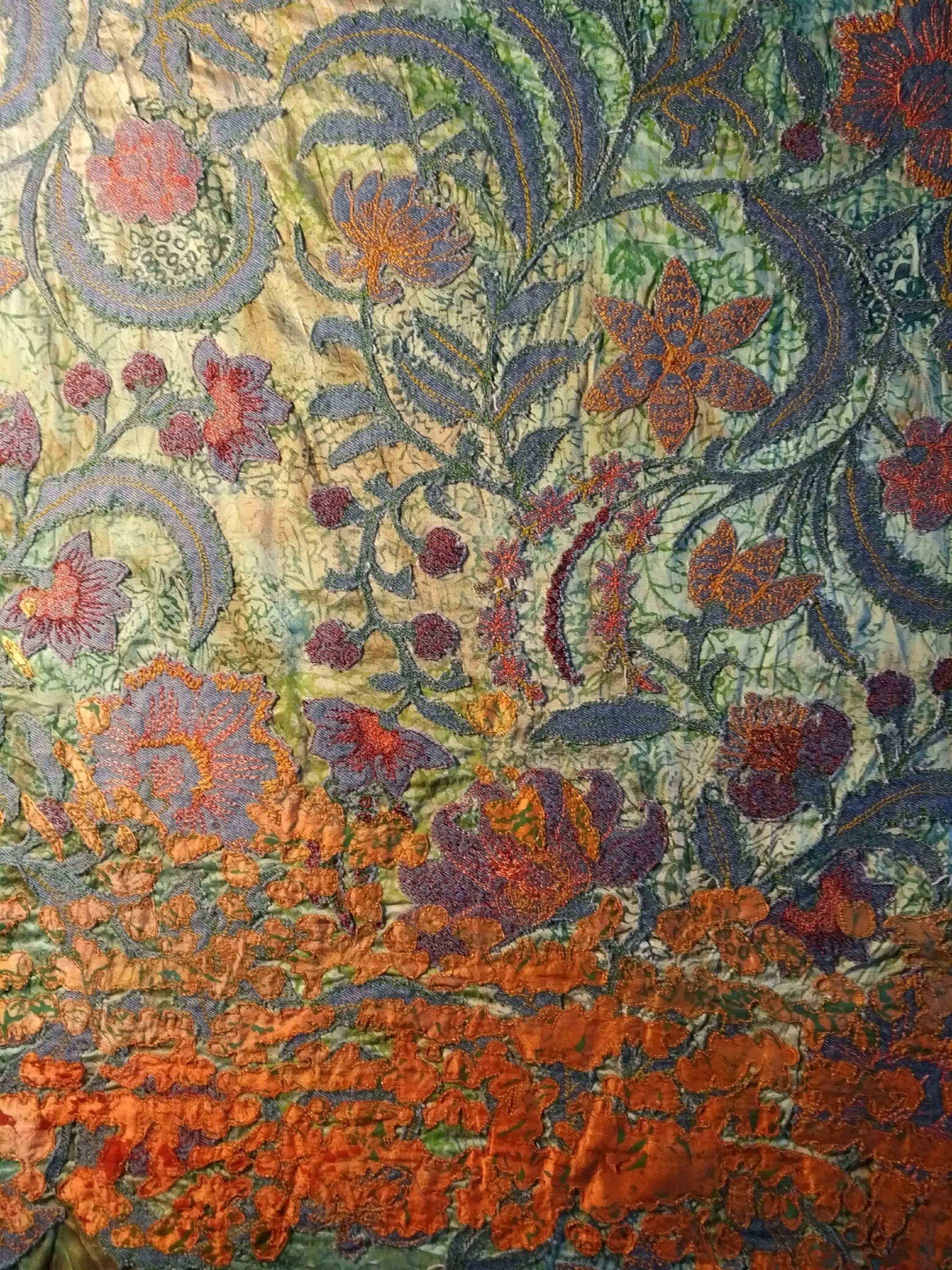
The textile addict
TextileArtist.org: What initially attracted you to textiles as a medium? How was your imagination captured?
Hannah Rae: Textiles in all forms have captured my attention for as long as I can remember. Whether utilitarian or decorative, historical or contemporary, embellished or very simple, from sailcloth to the most luxurious of silks, I adore them all.
As a fashion designer, I loved colour and print and had a fascination with denim and its processing, washing, dyeing, abrasion and distressing. I enjoyed pushing the boundaries of what was possible even if this wasn’t always very commercial.
I came to textile art later in life when I stopped working in the garment industry. There was a creative void in my life which needed filling. I picked up a needle and thread and stumbled upon my new way of working with fabrics. I haven’t looked back since.
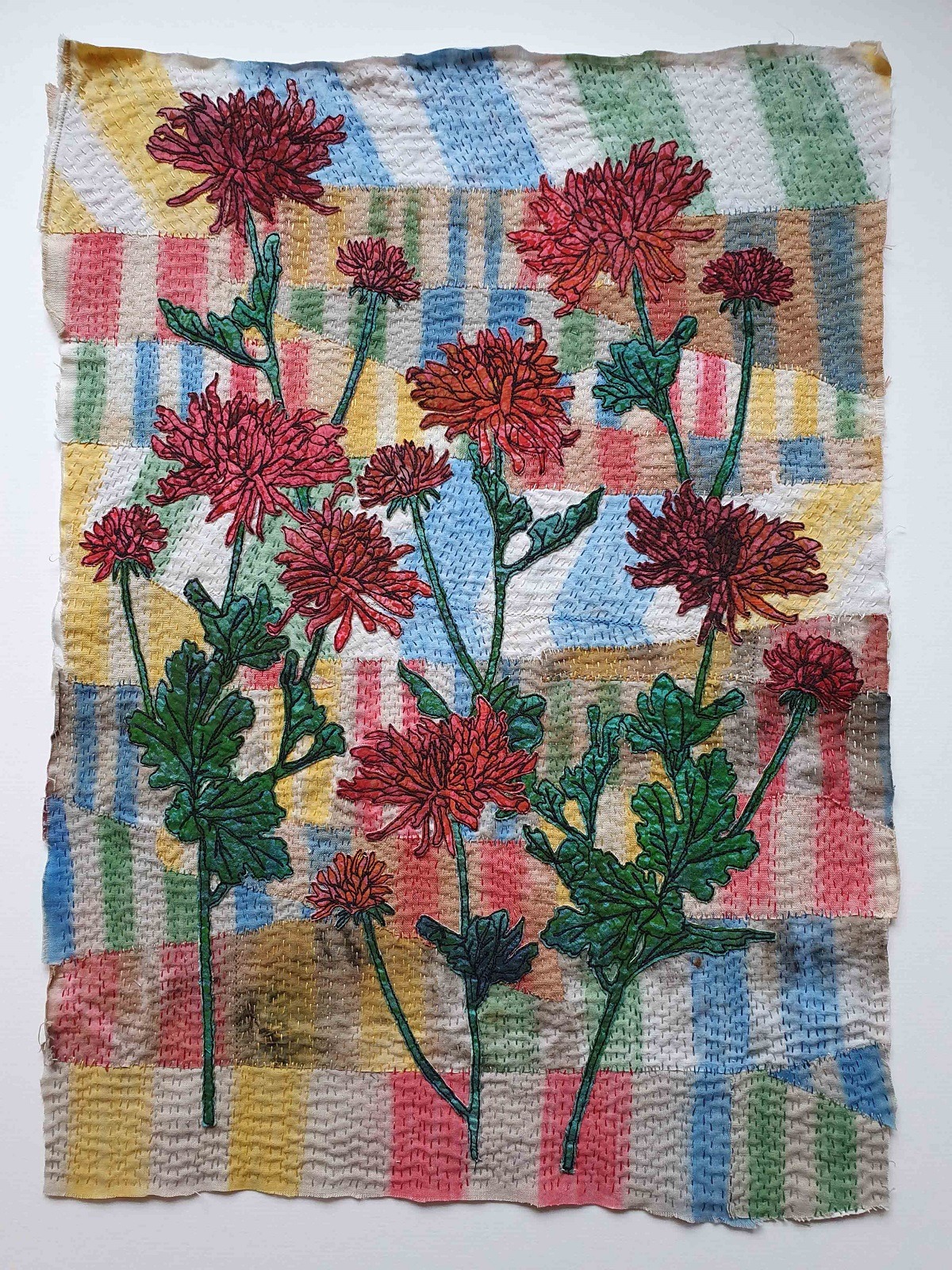
What or who were your early influences and how has your life/upbringing influenced your work?
Like many of the artists featured on www.TextileArtist.org, my earliest influence was my mother who played a huge part in sparking my passion for textiles. She made clothing for herself and all the family and she knitted, quilted and embroidered. She taught me to stitch and to make things with fabric. Mum passed on her appreciation of the beauty in handmade textile items such as patchwork quilts, rag rugs, Victorian samplers and medieval textiles.
After school I wanted to build on my love of textiles, so I took a Foundation year in Art at Coventry Polytechnic. My textile tutor, Pat Shenstone, furthered my passion. She taught me about dyeing, screen printing and knitting.
My parents bought me a knitting machine and this is how I began designing and making knitwear which I sold to boutiques in my home town of Durham. Wanting to progress further in textile design I completed a B.Sc. (Hons) in Textile and Knitwear Technology with Design, at Leicester Polytechnic. I learnt about all aspects of the textile industry and the science behind it.
I went on to enjoy a career designing and supplying high street fashion retail chains, working with manufacturers and fabric suppliers from Turkey, India and China. The travel I experienced, along with so many aspects of my working life, influences my work and processes today.
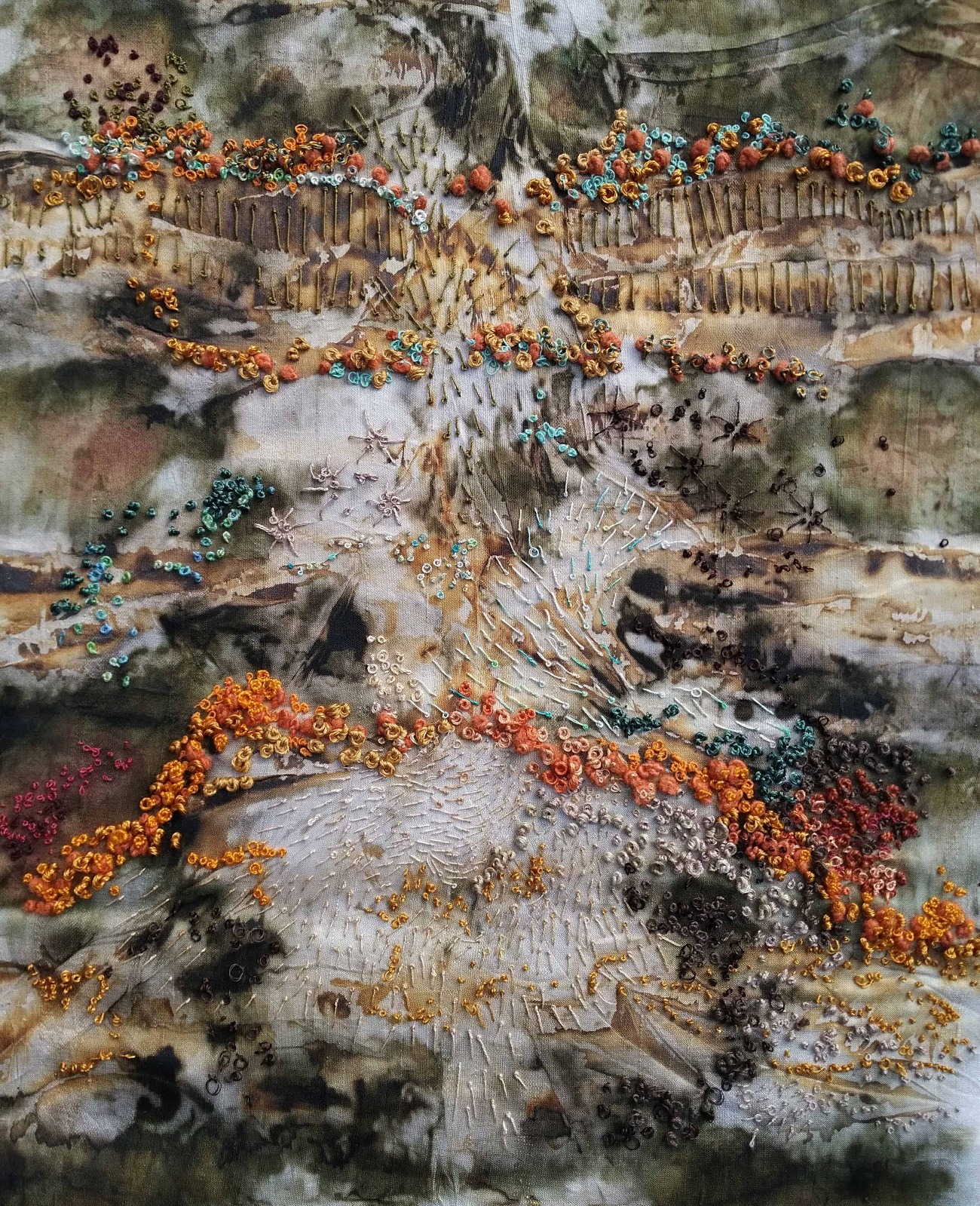
What was your route to becoming an artist?
The final part of the jigsaw slotted in place after I had stopped working in the fashion industry.
I began a distance learning course with the Embroiderers Guild. The course tutor, Gill Riordan, opened my eyes to the possibility of becoming an artist and encouraged me to get going!
Last year I began to put my work out into the world and had my piece Corroded Floral selected for the Open Art Exhibition at Peterborough Museum and Art Gallery. I exhibited with Eastern Region Textile Forum (ERTF) and with a small group of artists and makers in Grantchester near Cambridge. I began selling my work. This year I will be exhibiting during Cambridge Open Studios in July and I am working on pieces for another ERTF exhibition later in this year.
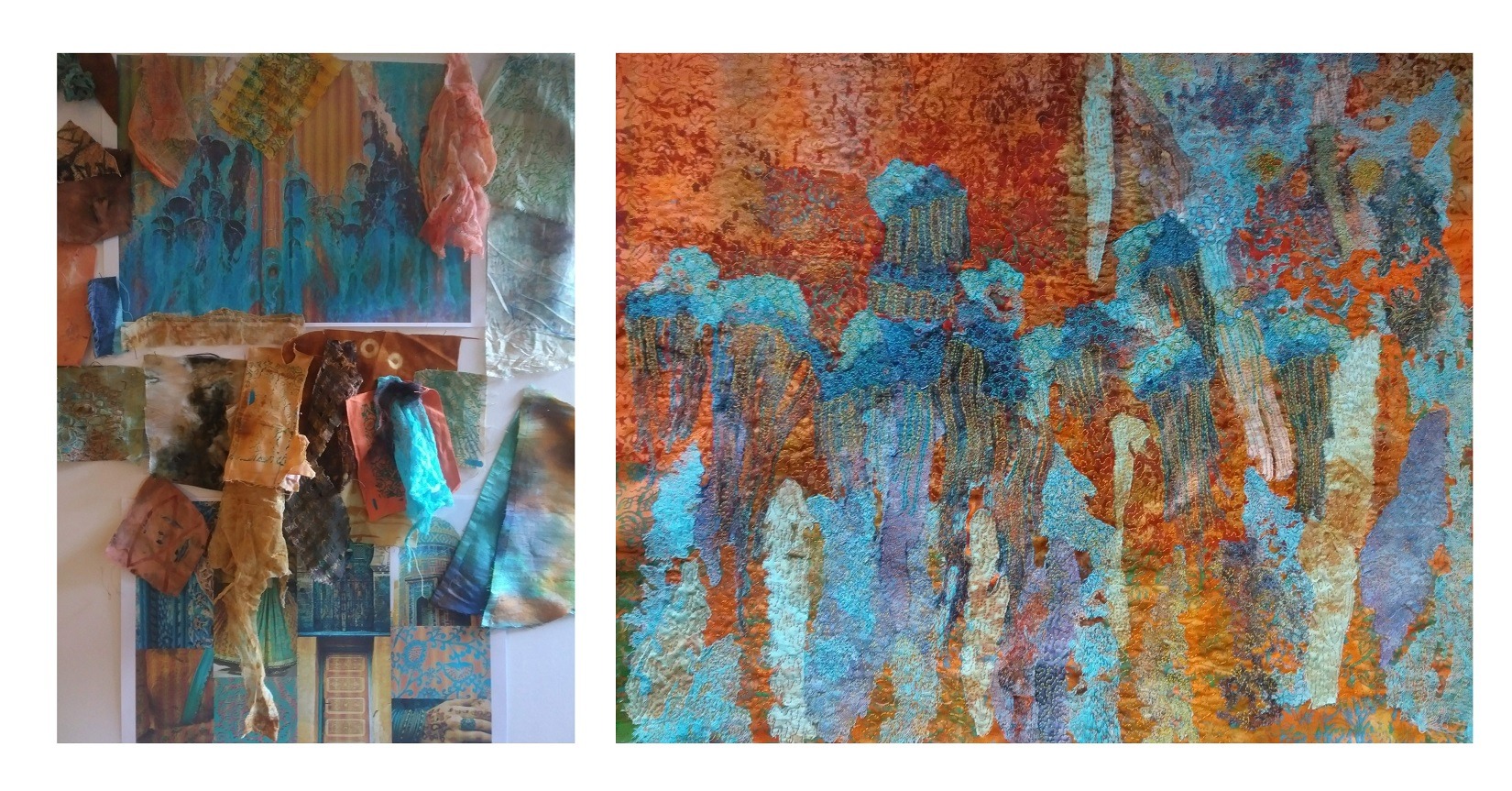
Building an inspiration board
Tell us about your process from conception to creation
I am not very disciplined about working with a sketchbook. Instead, I tend to record things that attract me using photographs, screenshots or even torn out pages from magazines.
When I am starting a new work, I look for images that resonate with me in that moment, gather them together and pin them to a large board. Using the colours, shape and texture within these images as inspiration, I start adding fabrics and making small experiments and samples to build up an inspiration board.
I always worked in this way as a clothing designer, so it is ingrained in my process and is always my starting point. Working with my iPad and Apple pencil I develop these ideas until I have a clear direction for the piece, often mocking up my design using Adobe Photoshop. Considering the layering of fabrics and colours, I plan an order of process for my work.
I then put together a selection of fabrics and threads that fit my colour palette from my stash and then dye, over-dye, bleach out and print more fabric pieces until I have a good range of materials to work with.
I build up the piece in layers using both machine free-motion embroidery and hand stitching, cutting away fabric as I go to allow the fabrics below to peep through. I keep on going, working in an intuitive way covering, uncovering, adding and taking away until the work feels finished. The work almost takes on a life of its own and leads me to its completion, in an organic way.
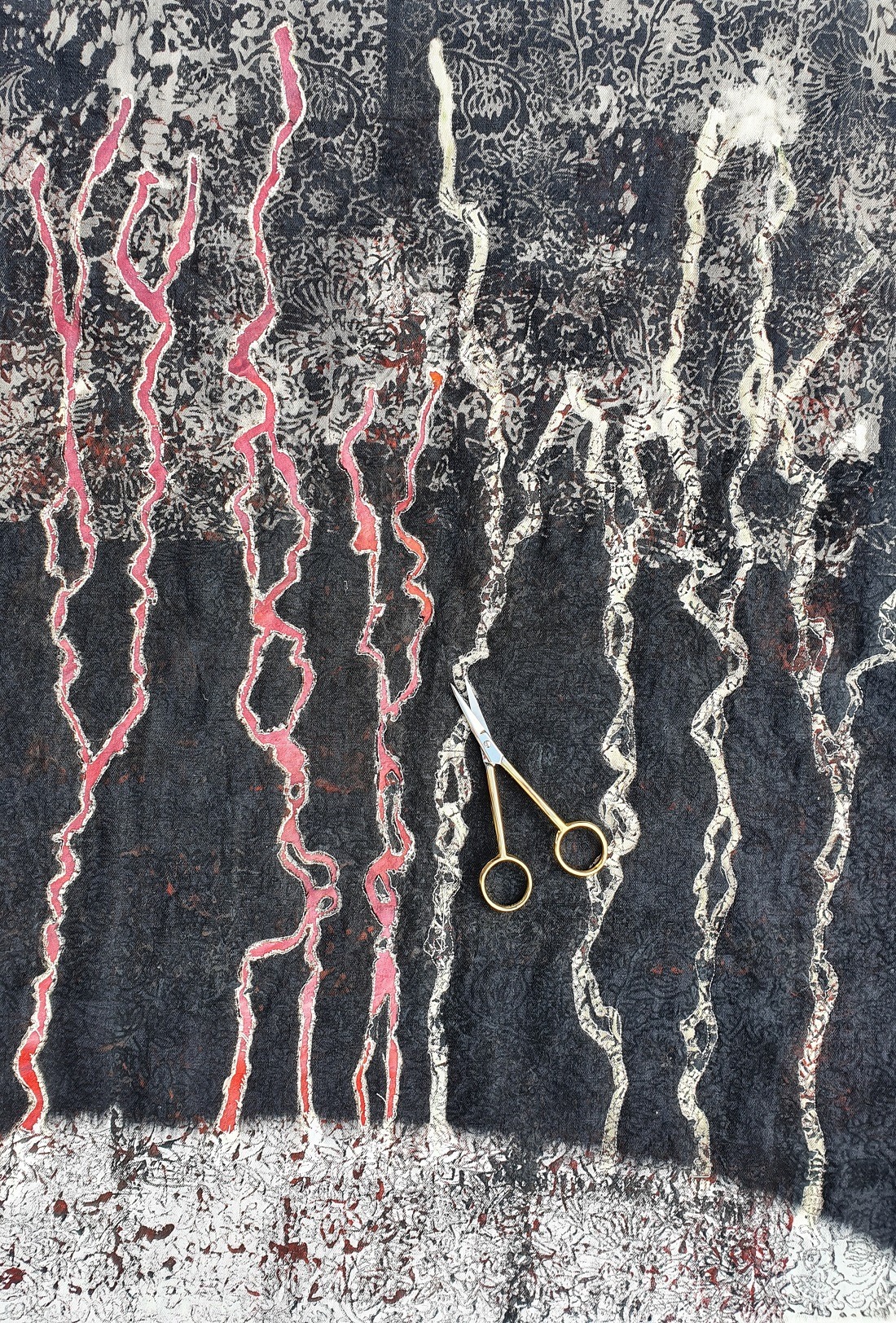
Tell us a bit about your chosen techniques and how you use them
Most of the fabrics that I use are from my existing stash built up over the years or are pre-used and sourced from charity shops or eBay. I favour natural fibres such as cotton, linen and silk. I also use parts of old embroideries and embellishments, collaging them into my work.
I am passionate about colour. I love using Procion dyes, eco-dyeing and rusting to transform fabrics to give them depth and then I add texture and surface pattern with woodblock print and Inktense blocks. I frequently over-dye my hand embroidery threads alongside the fabrics I dye, to give a continuity of colour.
Appliqué is an important part of my work. I often draw my designs onto soluble stabiliser as a way of transferring drawings to fabric.
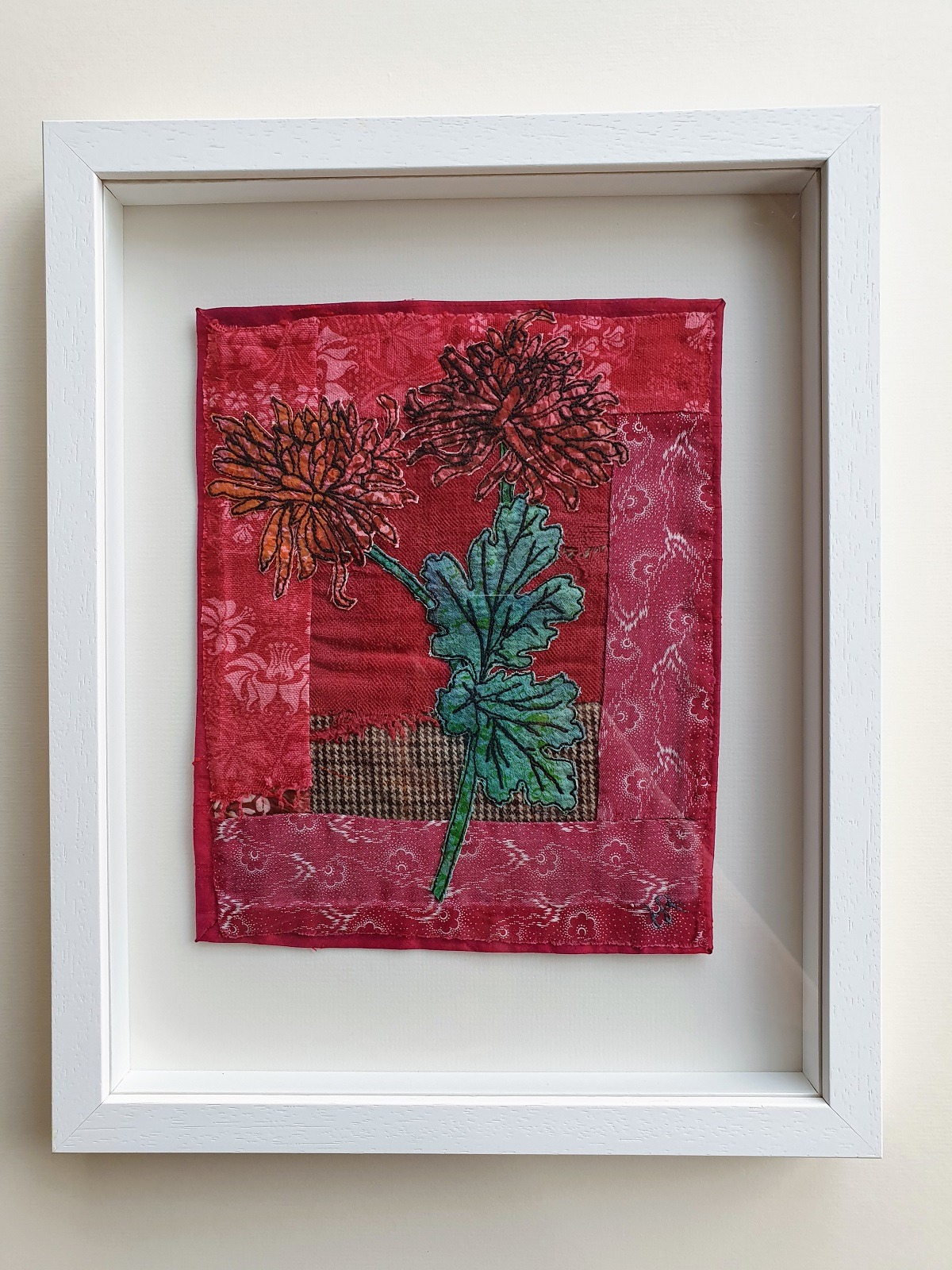
What currently inspires you?
I find much of my inspiration from within the spaces and places that surround me, both rural and urban.
I look for signs of the passage of time and the fragility in things, through their breakdown and evolution from weathering and ageing. That wonderful inherent beauty that comes with the oxidation of metals, the decay of weathered wood and the fading and muting of sun-bleached colours.
I use these ideas to decorate and embellish my work in the same vein, to bring a sense of renewal and rejuvenation to each piece.
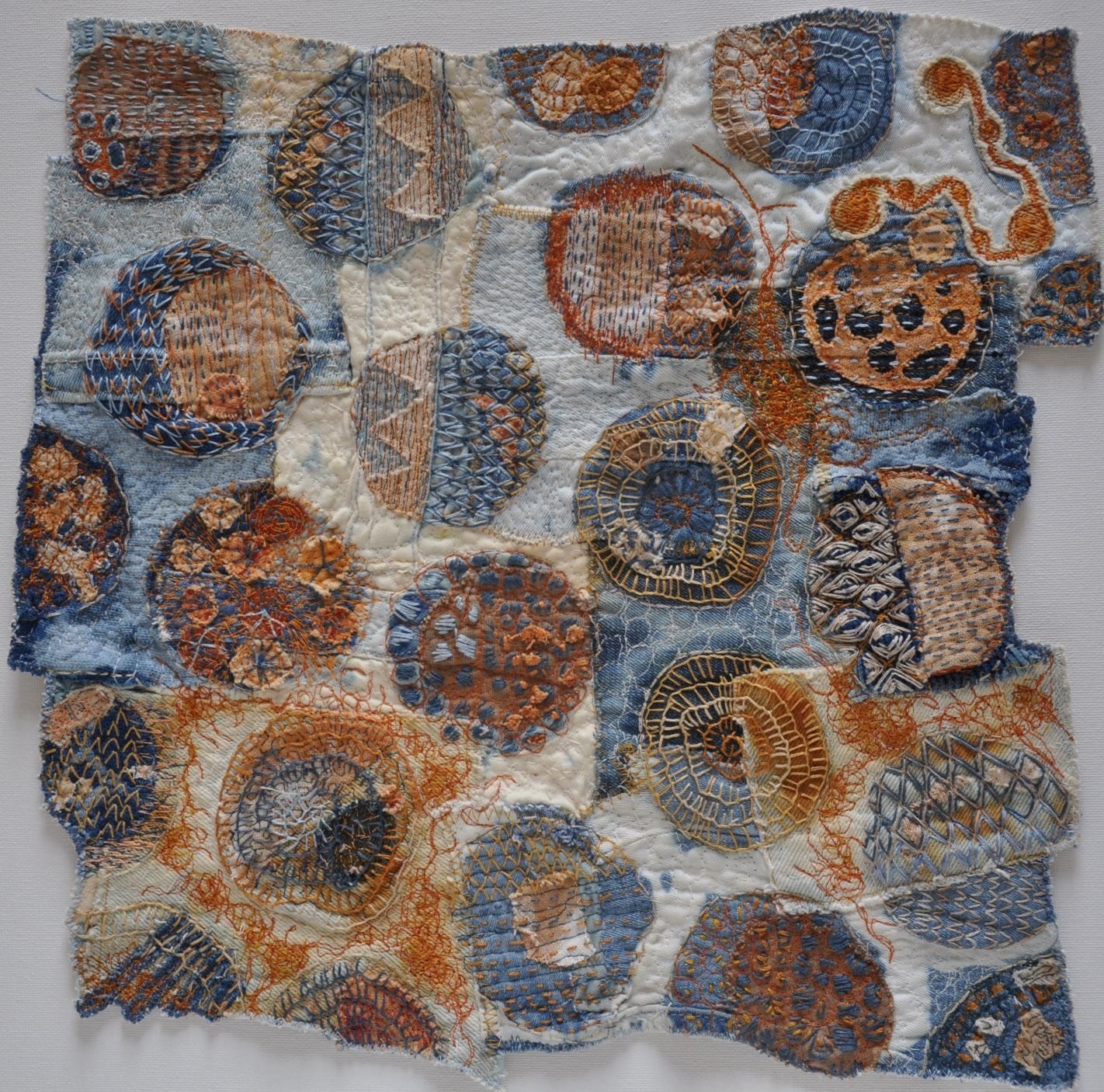
Depicting the passage of time
Tell us about a piece of your work that holds particularly fond memories and why?
The piece Rust and Revive was one of the first artworks I produced. It encompasses my love of denim and aged fabrics while exploring the impact of the passage of time on surfaces.
The piece is concerned with the renewal of old textiles, reviving them to create something new. At the time of its making, this piece resonated deeply with me and the place I found myself in my creative life.
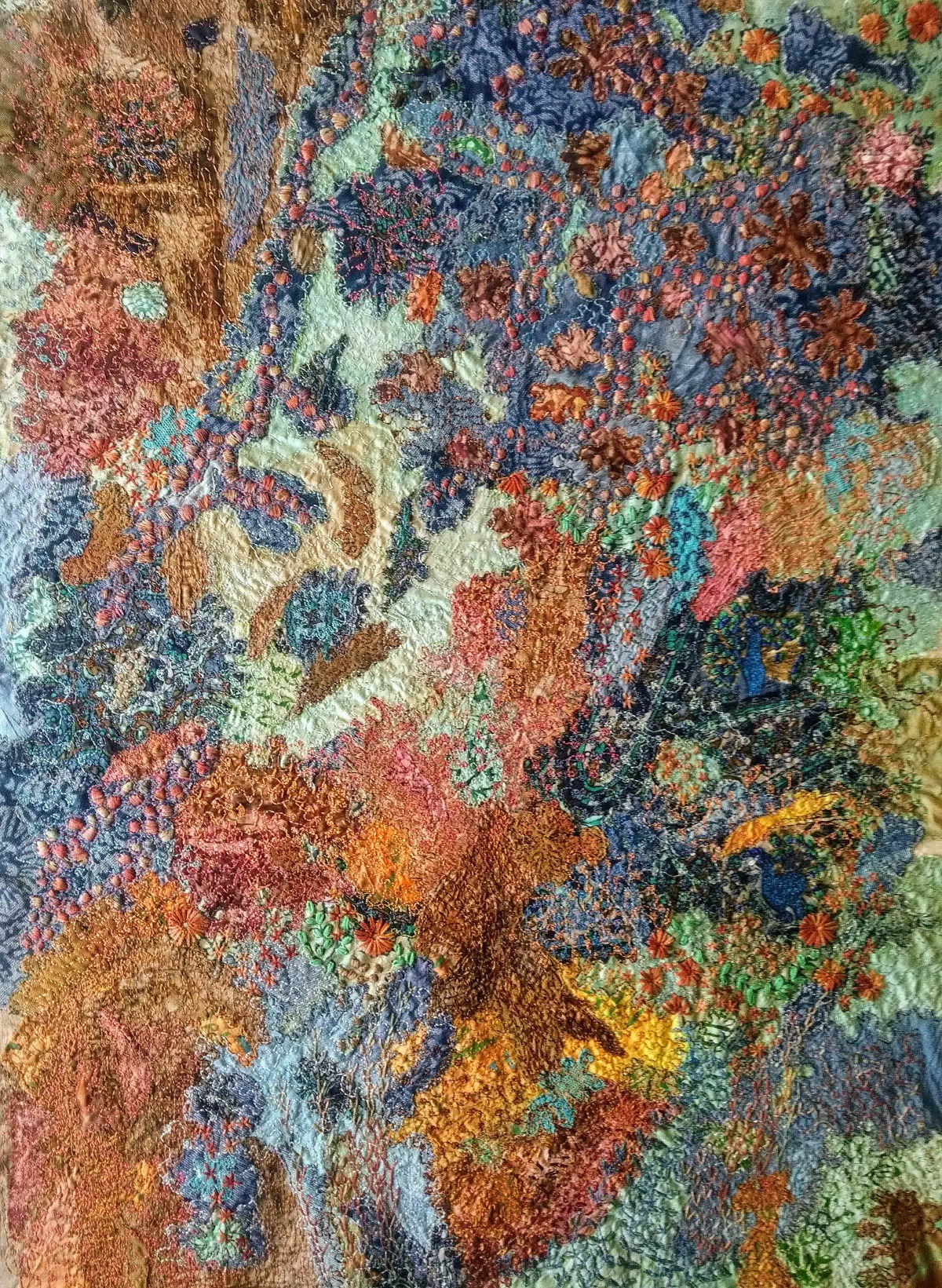
How has your work developed since you began and how do you see it evolving in the future?
I have only been working as an artist for just over a year and so I am at the beginning of my creative path. My work is evolving constantly but I find that I am forming my own artistic identity and am building upon this.
I am unsure where I will go from here, it’s a case of seeing where it leads. For now, I am indulging the drive that pushes me forwards.
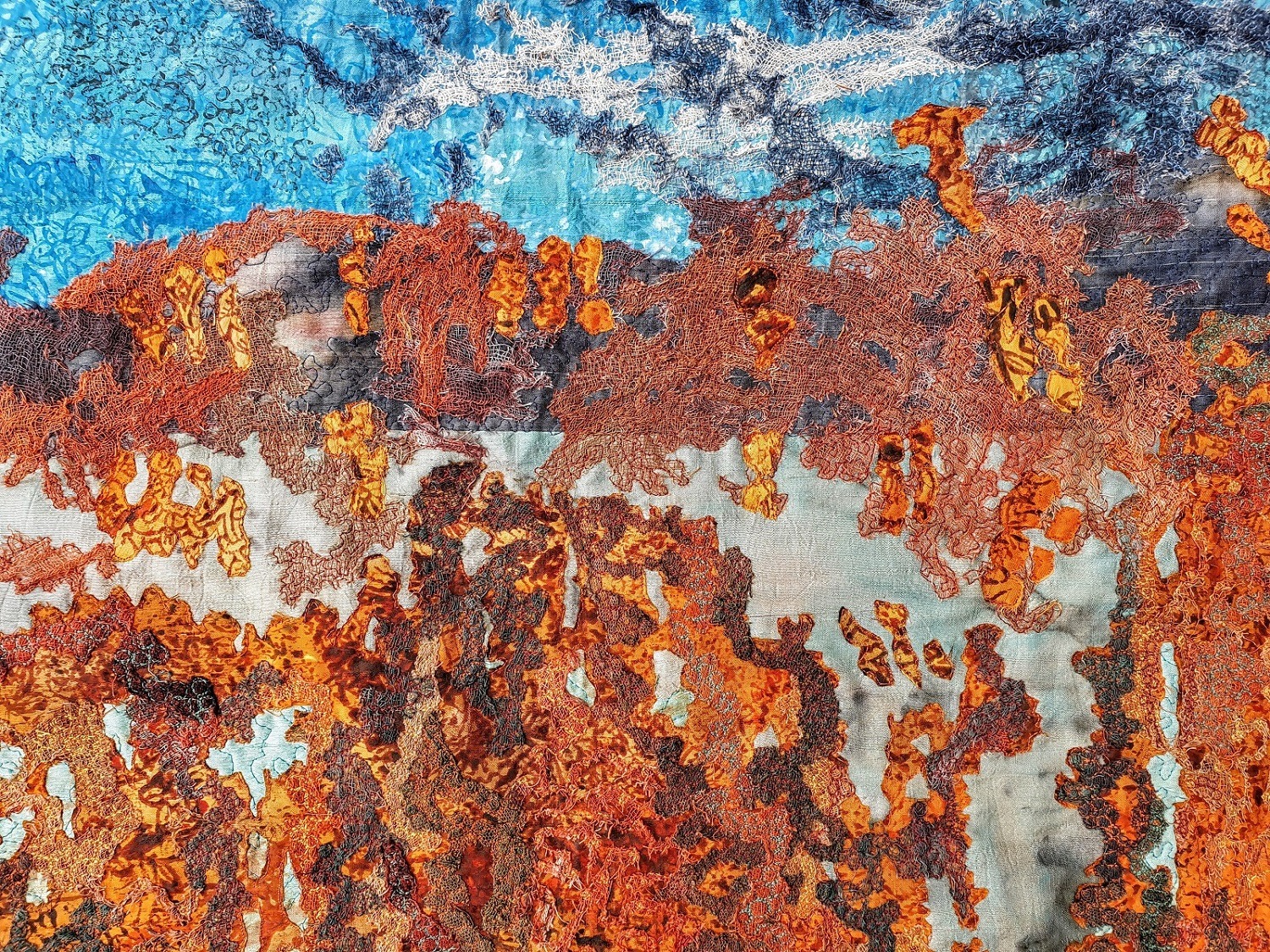
What advice would you give to an aspiring textile artist?
As a new artist, I have only a small amount of experience. So, the advice I would give is the same as I follow myself; keep experimenting and trialling, learn from what doesn’t work as much as from what does, enjoy those happy accidents and build upon and develop your successes.
For more information visit hannahrae.co.uk
Do you like to repurpose textiles like Hannah? Share your comments with us below.
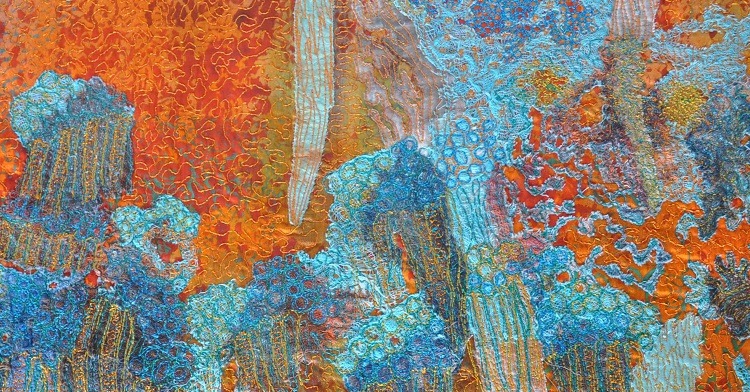

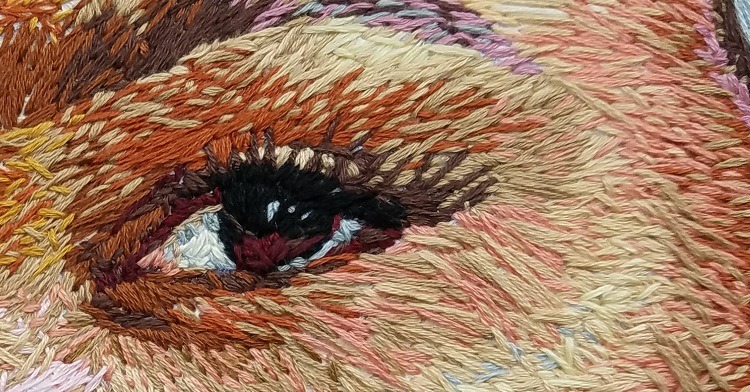
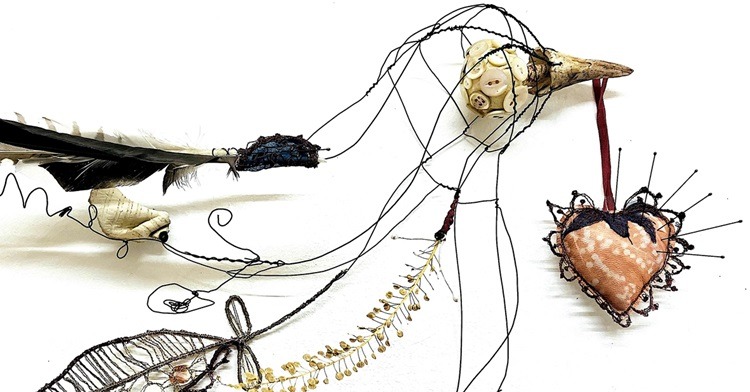
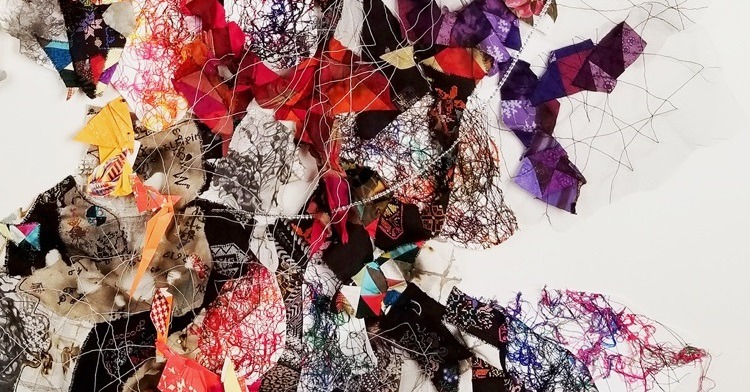
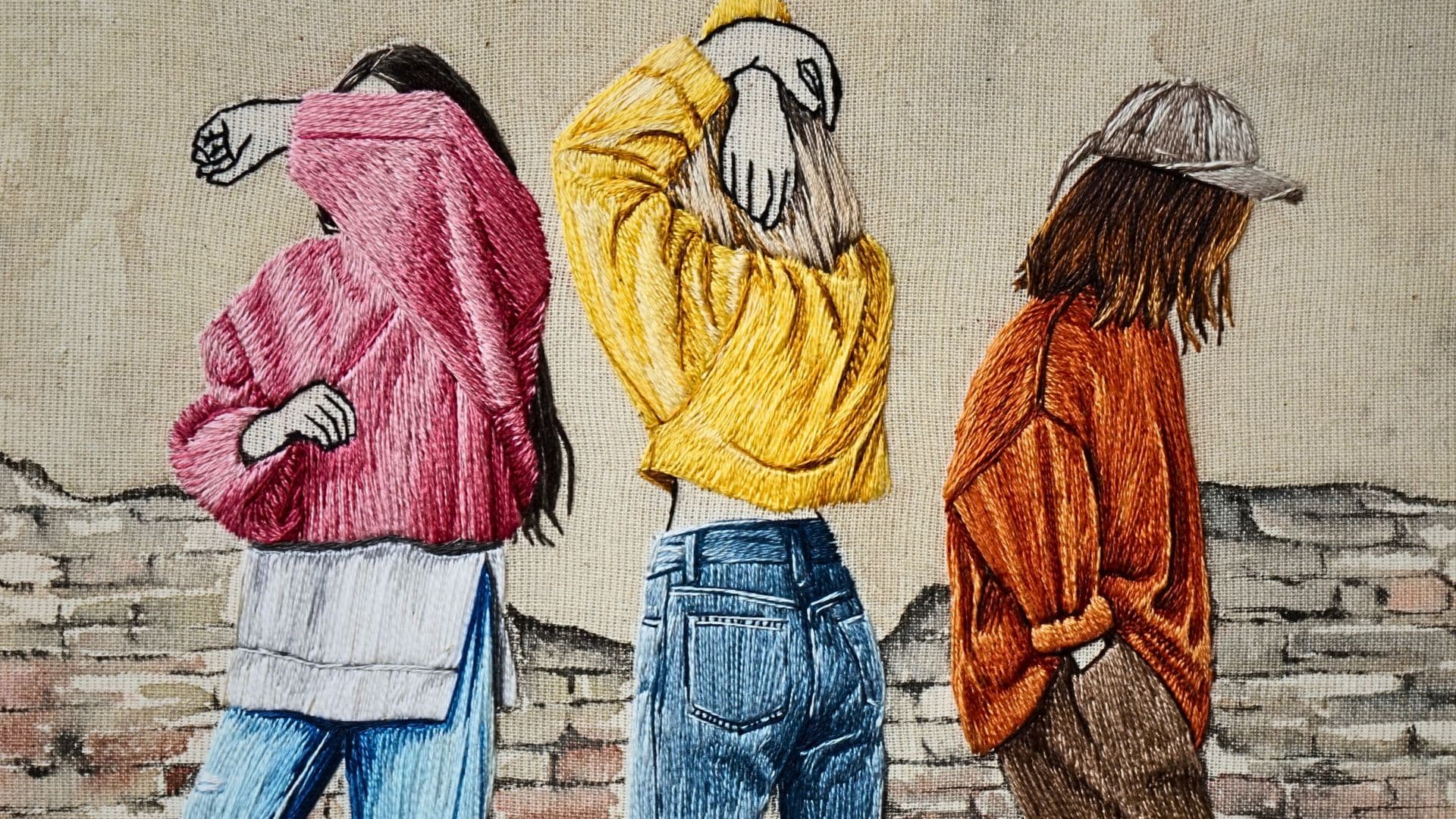
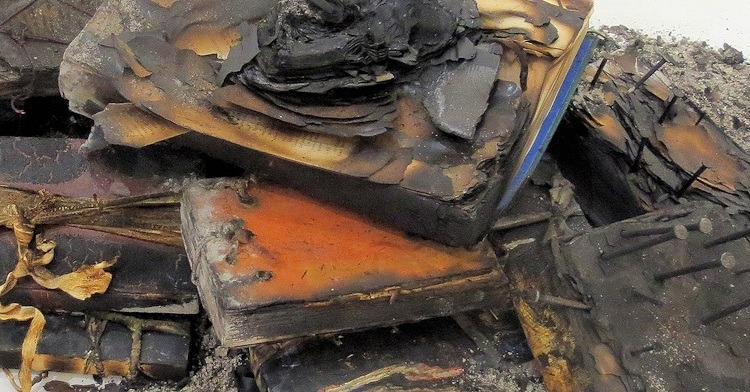
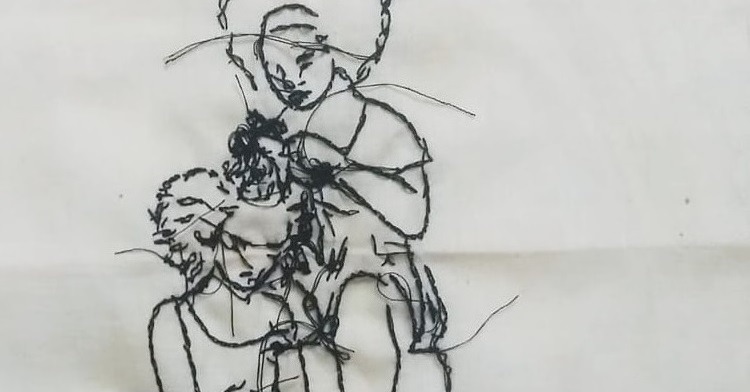
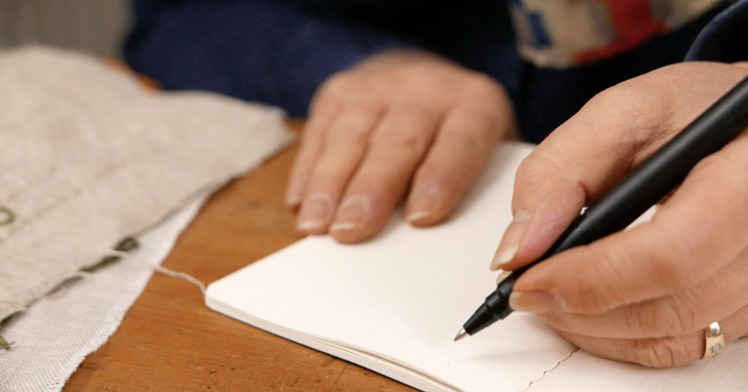
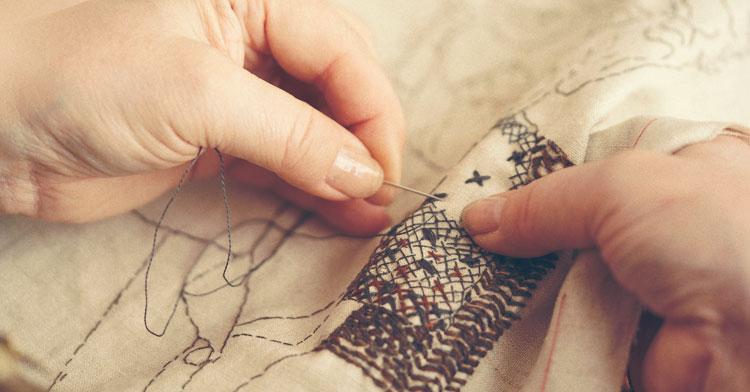
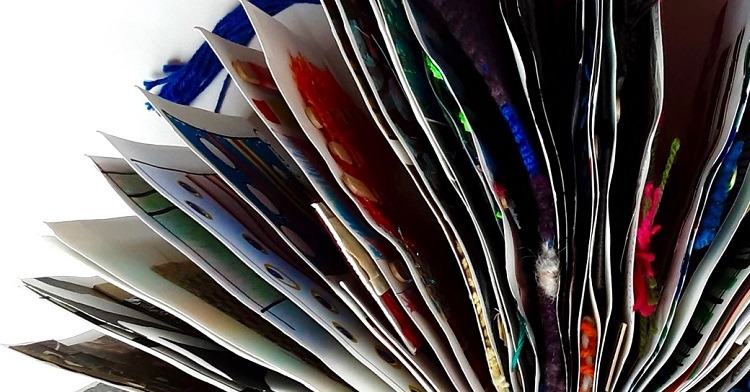
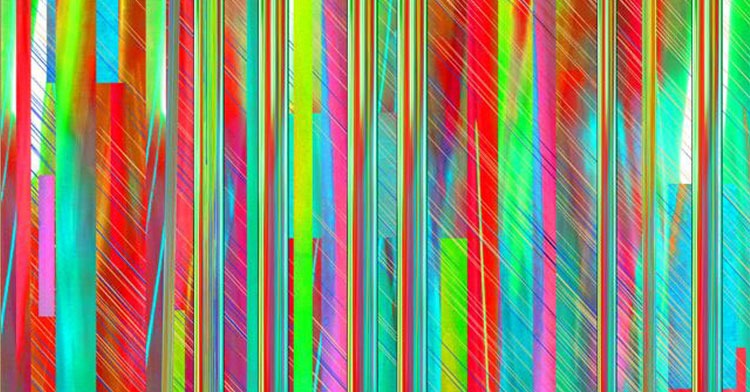
9 comments
Leesa Zarinelli Gawlik
It’s inspiring to see other artists working with repurposed textile and I love the addition of the intense
thread work on the surface of Hannah’s art. For my own work, repurposed kimono lining serves as
the foundation of textile assemblages. The silk habutae linings love the application of natural dyes.
I rarely use purchased fabric.
Cathy Mullan
High Leesa. I love the sound of your work. Where do you source kimono lining – it isn’t an everyday item for sure!
Julie Short
Hannah Raes work resonates deeply with me.
I have been repurposing and reinmagining fabrics for many years.
Many of my pieces were made as whole cloth pieces which I then used to make clothing for myself.
Hannah’s beautiful pieces have inspired me to take my love of the worn, frayed and bleached and explore some more.
Diane Rogers
Hi
Love your work. I too use photography to record things interesting and inspirational to me, rather than using a sketchbook. The natural environment , weathering also decay are subjects I use in my own textile art. I went to Loughborough and worked as a freelance fashion textile print designer for many years before moving into textile art and embroidery.
Wishing you every success .
Janice Mccarty Design
Soooo inspiring!
Thank you!
felice sachs
For a number of years I have been incorporating used clothing as my palette. Sweaters cut and mpieced into blankets. Knit and woven men’s Shirts cut and pieced into wall hanging. Women’s blouses appliqué’d into a prayer shawl and items of clothing – denim jacket+ t-shirts mounted on pieced blue jean fabrics as a “portrait “.
There’s satisfaction in recycling and repurposing clothing, especially if the clothing has meaning and memories.
sabrina
Really beautiful works, I love these!
sabrina
Ingrid Ellis
What beautiful work! Love the blue and the rust and the stitching. I make some vaguely similar work and it makes me feel somewhat better that you don’t use a sketchbook either. I just can’t seem to make that work for me, I tend to just go for it and see where things take me. Lovely interview. Much success in your career.
Muffy Clark Gill
For over thirty years I have been working in batik. I have also been recently repurposing fabrics and mixed media materials into a series I call “Shibuya” after the Shibuya Crossing in Tokyo. After taking a ten day workshop using indigo dying, Shibori, and katazome I came back and started experimenting with this new series and have gotten into every juried exhibition I have entered. You can see these pieces on my website: muffyclarkgill. Com/shibuya .